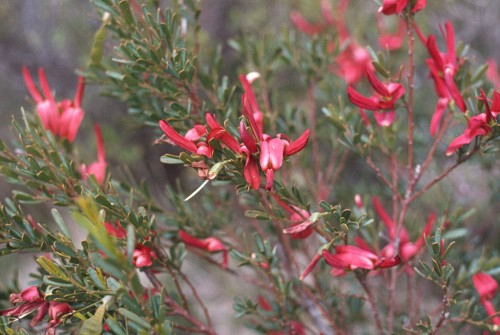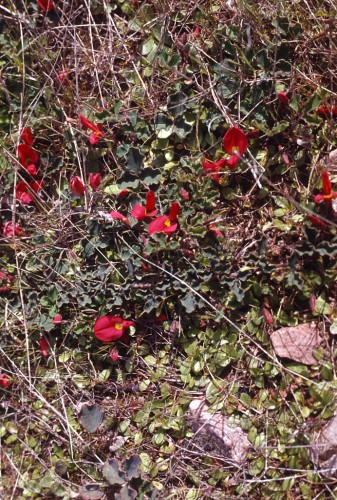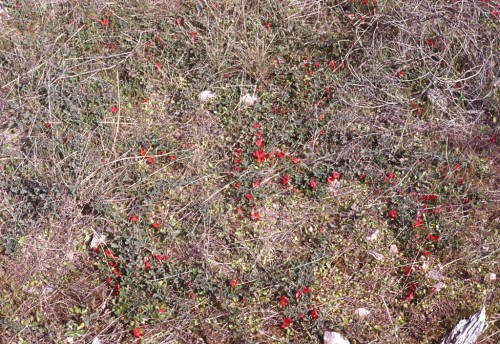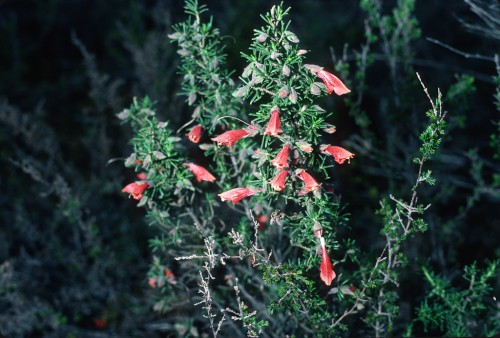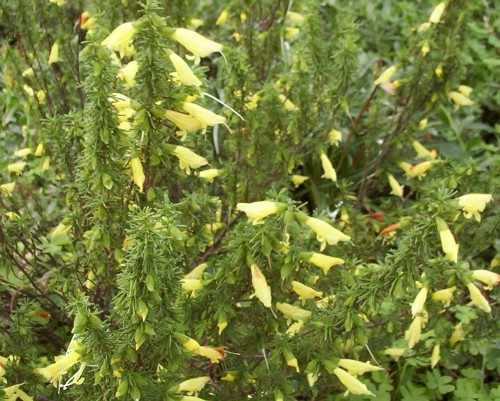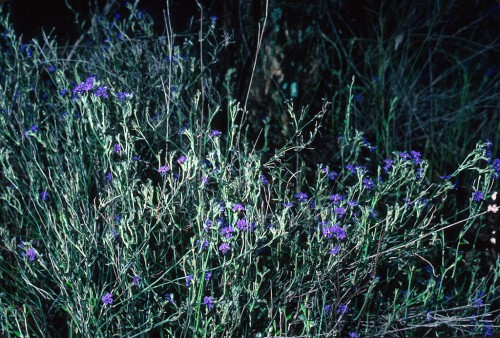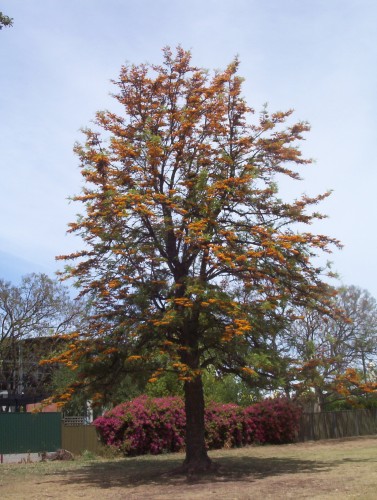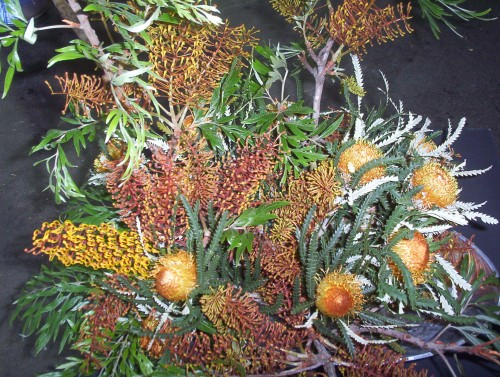There are large, red pea shaped flowers very attractive to birds and butterflies, during winter and spring. This is a hardy plant suitable for front line coast and inland situations. It is moderately frost tolerant and requires good drainage. This can be achieved by creating a planting mound at least 5-10cm higher than the surrounding soil, if drainage is a problem. Templetonia retusa is found in South Australia and Western Australia. More information can be found here and here.
Templetonia retusa (Cocky’s Tongue)
Kennedia prostrata (Running Postman)
This species grows in acid to alkaline conditions, is moderately frost tolerant, and can be trimmed if necessary. It flowers from winter through to early summer, depending on the area. More information can be found here and here.
Prostanthera aspalathoides (Mint Bush)
This photo was taken in Little Desert National Park. It grows in the mallee sands and there- fore needs good drainage. The occasional trim after flowering is useful for keeping the bush compact. Nectar feeding birds, like Honeyeaters, love the nectar filled flowers.
This is a species that grows in acid to highly alkaline soil, and is drought and frost hardy. It is suitable for second line coastal planting, and grows to .7m high.
Dampiera rosmarinifolia
Dampiera are suckering plants which form clumps, increasing from an underground root stock from which new growth arises. When this happens is a good time to prune out old growth and tidy the clump. This photo was taken in Little Desert National Park in Western Victoria and I suspect it is a subspecies of Dampiera rosmarinifolia. I will check that when I get access to my reference books again.
This is a hardy plant and has grown very well in our 350 mm of rain which we usually get in the winter. It flowers in the spring with these dark purple flowers. We have a pink and a mauve version of this also. It needs well drained soil which can be achieved by mounding the soil. Even as little as 10 cm will improve drainage.
